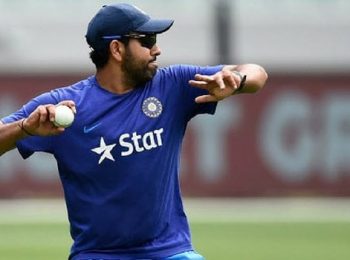Heading into the third week of the tournament, many teams are still trying to find the right balance and settle on their ideal combinations. While some sides are clearly in a better rhythm than others, the impact of the mega auction is still evident. There are teams that remain uncertain about their short-term plans—especially when it comes to figuring out the best top-order pairings.
On a broader note, this past week has seen bowlers really come into their own. It’s been a well-balanced week overall. In previous IPL seasons—especially last year—we saw a flood of runs, with bowlers often reduced to mere bowling machines. But this time, we’re witnessing bowlers delivering impactful, game-changing performances, which is a refreshing shift. It’s been a refreshing balance between bat and ball this week.
Take Rajasthan Royals, for example—they’ve had a fantastic turnaround. After a shaky start and a couple of early losses, they’ve bounced back with two solid wins. That’s often how it goes—you look to your senior, established stars to step up. And that’s exactly what happened with Jofra Archer and Yashasvi Jaiswal. Archer, in particular, has been outstanding. He’s looked back to his best—bowling with real pace and rhythm, brimming with confidence, and leading the attack like a spearhead.
Jaiswal chipped in with a crucial knock in the last game, and Sanju Samson’s return as captain has brought a sense of stability to the side. It’s that blend of steady leadership and key players stepping up that’s really starting to click for Rajasthan.
Another positive sign is how they’re using Shimron Hetmyer up the order. In the last couple of games, he’s come in around the 13th or 14th over—which, in my view, is the bare minimum. Getting him in earlier gives them that extra firepower when it matters most.
I think 13 or 14 overs is the latest Hetmyer should be walking in. If they continue using him wisely, I believe they’ll be rewarded with more match-winning performances as the tournament progresses. Tactically, it’s been a strong week for Rajasthan—and importantly, their star players have stepped up to back those decisions.
On the other hand, LSG have been a bit up and down. That loss to Punjab was disappointing. After the game, there was talk about wanting a slower pitch, but honestly, I think what they really need is a good, balanced surface. Their biggest strength is that top five or six—and at home, they should be playing to that advantage, not neutralising it.
To get the most out of that powerful top order, they need to back it up with a good batting surface. In that game, the pitch seemed to favor Punjab more, which worked against LSG’s strengths. That said, they bounced back with a solid win over Mumbai, making it a bit of a rollercoaster week for them.
Going forward, one of their priorities at home has to be ensuring the pitch plays to their batting advantage. While that’s not always fully in their control, it should be a focus.
The return of Akash Deep has been a big positive for them. And while there are still lingering concerns around Rishabh Pant, I remain a firm believer in his talent—I’m confident he’ll find his rhythm and come good sooner rather than later.
Personally, I feel Pant should be opening the batting—it’s something they could consider building towards. Of course, Aiden Markram has been doing a solid job at the top, and with runs flowing from that end, making a change won’t be easy. But if Pant can find form, it could be one of the final, crucial pieces of the puzzle for them. That said, their bowling line up still raises a few concerns.
As for Mumbai—they’re in need of a serious lift. Momentum hasn’t quite come their way yet. You’d expect Mumbai to get a boost soon—especially with Bumrah back in the side. That should definitely lift the squad. After their win against KKR, I really thought they’d build on that momentum, but they’ve slipped again since then.
There are a few ongoing concerns—Rohit’s injury, for one, and some uncertainty around the batting order. The number three spot still seems unsettled—one day it’s Jacks, the next it’s Tilak. It circles back to my earlier point: there’s still a lack of clarity around the team’s balance and structure.
Meanwhile, CSK are going through a particularly rough patch right now. Much like Mumbai, CSK are still searching for the right balance at the top of the order. Personally, I’ve been advocating for Devon Conway to open—he’s a solid option and brings stability. I’d pair him with Ruturaj Gaikwad and push Rachin Ravindra down to No. 3.
These changes might seem minor, but in the bigger picture, they’re key to finding a top order combination that can consistently deliver—especially when chasing. Right now, they’re struggling to chase 180-plus targets and above, which is putting added pressure on the bowlers to limit opponents to below-par totals.
But let’s be honest—on many of these pitches, 180 is the bare minimum. In fact, on some tracks, it’s not even a competitive total. That makes life incredibly tough for the bowlers, who are constantly trying to compensate for underperforming batting units.
That’s why CSK need to settle on a top-order combination that better supports their bowling attack. For me, Conway has to open.
Switching over to Gujarat Titans, they’ve had a more stable top order. Buttler’s been in good touch, and the top three have consistently stepped up. Shubman Gill, Sai Sudharsan, Jos Buttler have all chipped in with important contributions—they haven’t really let the team down so far.
The real test for GT will come when that top order doesn’t fire—because so far, they’ve largely been shielded from that scenario. When it does happen, the middle order will need to step up, and that’s an area they’ll need to strengthen as the tournament progresses.
Their bowling attack, though, has been operating smoothly. One small concern is Rashid Khan—he hasn’t quite hit his peak form yet. But on the flip side, Mohammed Siraj has been absolutely sensational. He’s been incisive with the new ball, showing excellent control and rhythm.
And I have to say, I’ve been hugely impressed with Prasidh Krishna as well—he’s brought a lot of quality to their attack.
Prasidh Krishna’s impact hasn’t just been with the new ball—he’s been incredibly effective in the middle and at the death as well. To come on after 10 overs when the opposition is set and still make a difference is a real skill, and he’s delivered exceptionally in that role. In many ways, he’s helped offset Rashid Khan’s relatively underwhelming form so far. Washington Sundar’s inclusion has also added some welcome depth with both bat and ball. Interestingly, he was brought in primarily to counter SRH’s left-handers at the top, but that plan didn’t quite pan out. Ironically, he made more of a contribution with the bat than expected.
As I’ve mentioned before, it’s still surprising to me that players like Washington Sundar and Glenn Phillips are not in the side. Thankfully, Sundar’s now in—but the balance of that XI still feels like it has room for optimisation. I still think there’s a place for Glenn Phillips in this XI, even if the team management sees it differently. Perhaps that’s something they’ll revisit as the tournament unfolds.
As for SRH, it’s been a tough ride so far. Coming into the season, many had them pegged as one of the favourites, but they’ve struggled to find rhythm. Their bigger issue remains the lack of runs. And that raises the real question: where are those runs going to come from?
Interestingly, I didn’t see their early struggles as entirely negative. In fact, I thought facing adversity in the first few games might help them settle on their best combination. But that clarity still seems to be missing.
A big part of that is the compromise they’ve had to make with their bowling line-up—Adam Zampa’s absence has been notable. To make up for that they included Kamindu Mendis in the side who can bat and bowl and Zeeshan Ansari has stepped in as the leg-spinner. He’s shown promise and brought some balance, but the team is still clearly searching for a
formula that clicks.
The inconsistency is becoming a bit more persistent. So, how do SRH address it? Honestly, it’s not about trying harder. It’s about staying true to their identity. They need to back their original approach—stay aggressive, play with intent.



























